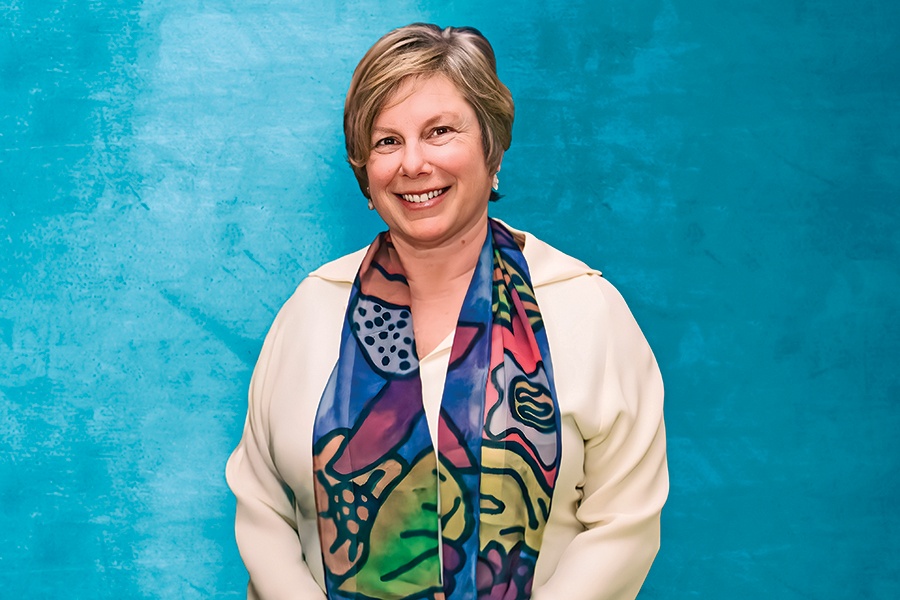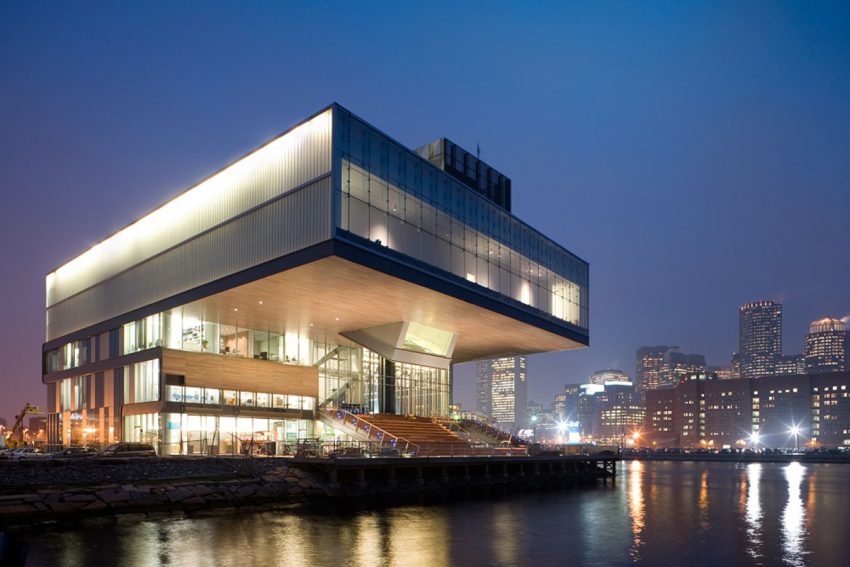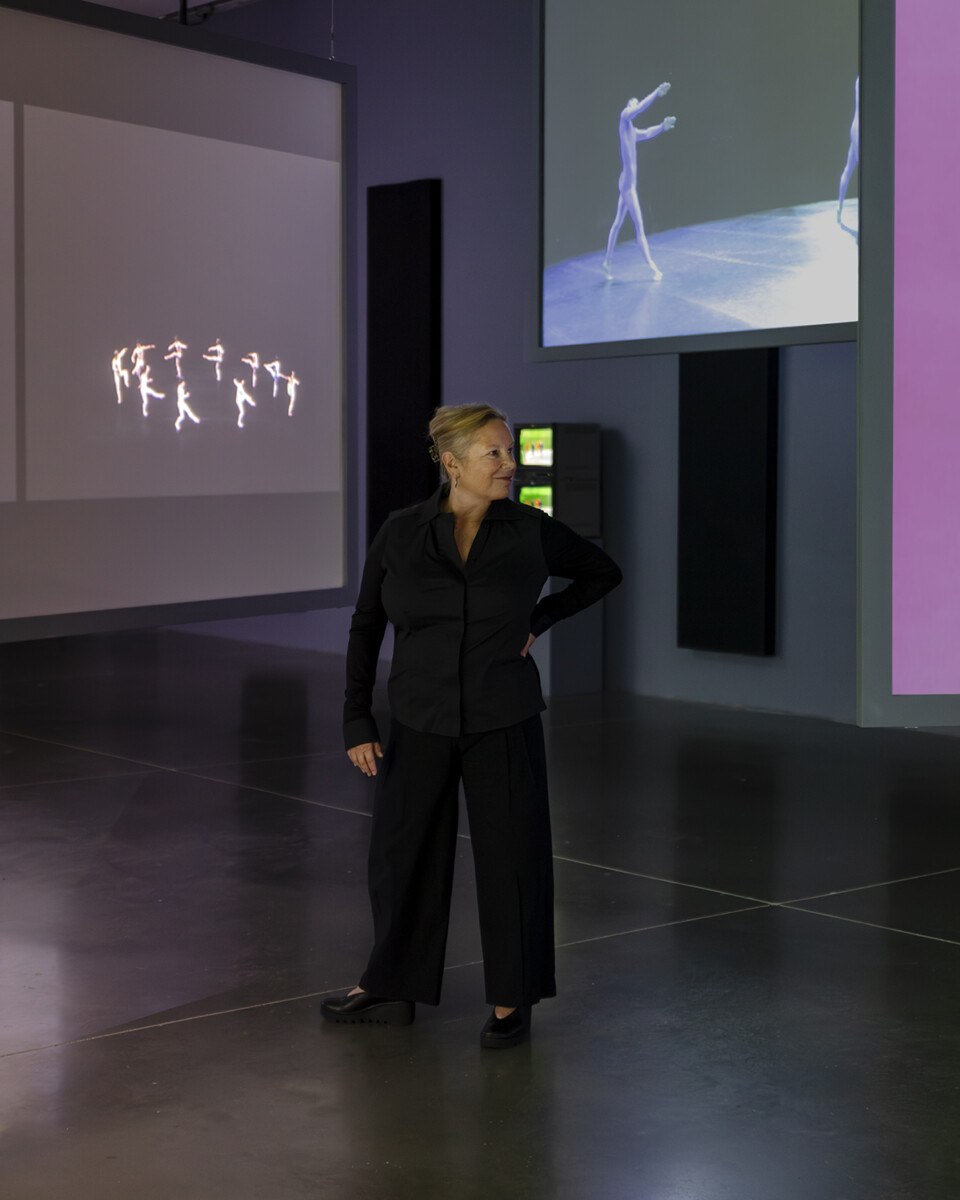The Exit Interview: Jill Medvedow, Outgoing ICA Boston Director
After 27 years shaping the Institute for Contemporary Art, the powerhouse museum leader is stepping down. Here she shares parting pearls from a lifetime of modern art.

Photo by Scott Eisen/Getty Images for Max Mara
When ICA director Jill Medvedow arrived for her first day on the job in 1998, the museum—by her own admission—was floundering, with empty coffers and tiny crowds. Fast-forward to her 2024 retirement, and the art-world powerhouse is leaving behind an impressive legacy: an architectural marvel in the Seaport that helped mark the beginning of the waterfront renaissance; an edgy new art space, dubbed the ICA Watershed, in Eastie; and a formidable permanent collection featuring diverse talents. Now, as Medvedow signs off after nearly three decades, with her successor Nora Burnett Abrams starting next year, she’s left her lasting fingerprints on Boston’s art scene—but still wouldn’t mind if you swung by and picked something up at the gift shop on your way out.
What was your biggest challenge when you started this job?
Well, when I started this job almost 27 years ago, I’d never been a museum director, and I walked into an institution that had no money, hardly any audience, a very small staff, broken computers…so I would say I had nothing but challenges. But I also had a lot of opportunity.
What do you feel is your biggest accomplishment?
That’s really hard for me to answer because there are so many things I’m proud of. I’m incredibly proud of this building and of our alliance with Diller Scofidio + Renfro. I’m incredibly proud of the Watershed, this beautiful, historic adaptive reuse that we did with Anmahian Winton Architects. And they’re so different. The art that we can show is different. The audiences are different. The kind of rough versus the finished. The sides of the harbor are different. But I would add to those two things the work we do with teens, which I’m incredibly proud of. Also, starting a collection. Those might be the four major peaks on a long road.

The Institute of Contemporary Art, Boston / Diller Scofidio + Renfro Architects. Photo by Iwan Baan.
Anything you feel like you’ve left undone?
There are tons of things I’ve left undone, and I’m so excited to see them done by someone else. One of the things we’ve just started working on, but that I’m really glad we at least got to crack the surface of, is our archives. You know, the ICA is one of the the oldest contemporary art museums in the United States, so the history of the ICA is also a history of contemporary art museums, and it’s such an important resource. That’s kind of at the top of the list.
What was the best perk of this job?
The people. The people I work with and the people I work for—colleagues, artists, board members, partners in the community.
Do you think this institution helped create the Seaport?
No. There was quite an elaborate plan for the Seaport that preceded us, even though we were the first new building here. I do think, though, that we’re responsible for a lot of the diversity in the Seaport, for teens and young people coming here, and for caring about and activating our waterfront.
If you had to use three adjectives to describe your strengths as a leader, what would they be?
Relatable. Clear visioned is two words, but we can hyphenate that. And I can’t decide between decisive and persuasive.

Photo by Mel Taing
Okay, you can have four. Things like the Red Bull Cliff Diving World Series and other non-traditional events at the ICA—how much have you had to do with them?
Me, personally? Very little, although I enabled them to happen, in that I didn’t veto them. But they’ve served two purposes that I’ve really come to appreciate and that overshadowed my initial anxieties. When we first started doing the cliff diving, it brought people to the waterfront and introduced them to the ICA, which I’m all for. And it’s still doing that. Plus, the divers are extremely beautiful and amazing to watch. It is truly kind of poetry in motion. It has a beauty like choreography does, or the way great basketball does. That sponsorship is also really important revenue.
Is the ICA gift shop the best place to do holiday shopping?
Yes, and could you please make that point? That would be really, really helpful.
Is there anything in the permanent collection that you don’t like?
One thing I do remind myself and others about is that if it really only reflected my taste, we’d probably have a museum of grids. I love the grid. So there are plenty of things that are probably not what I would pick if it were my museum. But this is not my museum. This is a museum that reflects a lot of different tastes, and that’s why it’ll stand the test of time, I think.
Favorite museum, aside from the ICA?
The Yale University Art Gallery and the Fondation Beyeler in Switzerland.
What do you think all great museums have in common?
Such a good question. I think that all museums share a belief in the power of art and objects to tell their stories and reach our inner souls and explain our place in the world. How they do it differs. At the ICA, our commitment is to both audiences and artists, and being the place that sits between the two. We’re committed to our curators, both in the performing arts and the visual arts. All of those balances are shifted slightly at different institutions, but I think this connection to objects and experience is what museums share.
How would you describe the function of the Watershed in relation to the ICA?
I think the Watershed has a couple of functions. One is to create a kind of long and immersive experience for visitors who are making the effort to come down here to the waterfront and then across the harbor so that, in addition to the galleries here, the visit is longer, and people can take this fabulous boat ride and have a very different experience. But also, it’s to offer to our audiences and artists a space that’s unlike any other in Boston, a really large, raw space where artists can work at a scale that otherwise doesn’t exist in our city.
Do you ever see the ICA having to repatriate anything the way the MFA has had to?
No. One of the great advantages of only having started collecting in late 2006 is that we will not be repatriating anything.
Any artists whose work you collect?
I don’t consider myself a collector. I have many beautiful things, most of which were given to me as gifts. I have a Nancy Spero that was given to me by the artist. I have a Louise Bourgeois that was given to me by the artist. We’ve marked a lot of occasions in our family by getting works of art.

Photo by Paul Marotta/Getty Images
With the museum, is there one that got away?
There’s one that I hope doesn’t get away that I really, really wish for the ICA collection, and it’s a beautiful piece by Charles Gaines that I hope to be able to bring into the collection before I leave.
How do you think the ICA will be viewed in 150 years?
It won’t be viewed at all if we don’t get our arms around climate change and rising sea levels. You know, one of the most important exhibits we ever did was our Black Mountain College show. The museum at Black Mountain was fairly damaged in Hurricane Helene, and so I’m thinking about places we think of as so sturdy and stable and permanent, and a lot of that has been upended. But if all goes well, my hope is that the ICA will be a beloved part of our ecosystem, with its finger on the pulse of what is new and always facing forward.
What’s next for you?
Well, something I’ve never been able to do is spend September on Martha’s Vineyard. A lot more time outdoors. That’s at the top of my list. And I’m really lucky that I have a fellowship at the Harvard Divinity School, so I’m going to use that time to write. I don’t see my work changing. I see the place where I’m doing it changing.
Do you think all museums should have free admission?
Yes, I do, and that is one of my great failures here. But I understand why the ICA can’t be free. To be free, you have to be supported by another institution, like a university, or the Smithsonian museums, or you have to have an extremely large endowment. So it would require a lot of money, which we don’t have. We have exceedingly generous donors, and their generosity is what keeps our doors open and our exhibitions and performances and education programs so stellar and so ambitious, but we don’t have that kind of endowment.
What parts of the ICA are under-appreciated?
There are two things. One is that most people actually do not know how incredibly complex it is to make exhibitions. These are multiyear endeavors that start with an idea and involve years of research, sourcing works of art, working with artists and lenders and donors, securing funding, and designing the exhibition. I think the complexity is under-appreciated, and maybe people would be more generous if they understood how truly costly and time-consuming it is and the many kinds of expertise needed. And then there’s our program with teens: 6,000 to 7,000 teens a year, mostly from Boston, come here. That’s a lot of kids. We love them, and we’re better because of them. That’s an important part of what we do.
Have you or has anybody here ever had to do anything outrageous to attract an artist or work?
No. We rely on a good, old-fashioned combination of pleading, beseeching, and cajoling. You know, the basics.
Do you think the museum world is too stuffy?
I don’t think the museum world is stuffy at all. I think the museum world is a circle that just keeps getting bigger and bigger and bigger. We love our audiences. We open our doors wide and often, and even though we’re not free all the time, way more than 50 percent of our visitors come in for free or heavily discounted. I think sometimes the language of museums can be stuffy, so that’s a fair criticism. But as places, we do a lot to make sure people see themselves on our walls, whether it’s the queer community, women artists, artists of color, whomever.
Favorite art fair or event?
The Venice Biennale.
Is performance as integral a part of the ICA as paintings, sculpture, and the visual arts are?
Absolutely. You are as likely to see an important expression of contemporary life on our stage as you are on our walls.
What’s the one thing you hope everybody who walks through the doors of the ICA takes away from it?
The thing I hear most in the galleries that gives me so much pleasure is when somebody looks at a work of art and says, “How did they think of that?” To my mind, that means that in that moment, somebody has realized that anything is possible. This idea didn’t exist for them before that moment, and somebody made it manifest.
By the Numbers
The Museum Jill Built
The ICA, reimagined. The numbers tell the story.
65,000
Square footage of the iconic ICA building in the Seaport that Medvedow ushered
into existence.
1,000+
Percent by which annual attendance at the ICA has grown under Medvedow’s leadership.
402
Number of pieces in the museum’s permanent collection, all acquired during Medvedow’s tenure.
250+
Number of exhibitions held at the ICA since Medvedow took over the museum.
1,145,000
Amount, in dollars, spent on acquisitions in 2023.
90
Height of the tallest platform, in feet, that’s extended from the ICA building for the Red Bull diving competition.
A version of this guide was first published in print edition of the December 2024/ January 2025 issue, with the headline “The Exit Interview.”
Previously
- An Oral History of the Boston Seaport
- The Interview: Jill Medvedow (from 2018)


